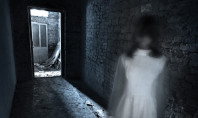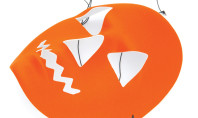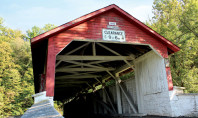Preserving the History of the Molly Maguires

By J.F. Pirro
When Betty Lou McBride married her husband Tom, she never imagined she would spend 19 years in jail because of it.
You see, when Carbon County vacated the late 19th century prison in January 1995, Tom floated the notion of buying the cut-stone structure past Betty Lou. “I told him that I would never go in it,” she says now. “He soon convinced me. My curiosity got me.”
After purchasing the prison, the McBrides were soon restoring it and preserving the story of the Molly Maguires, seven unionized Irish coal miners hanged there amid controversy that remains as unsettled as the ghosts said to still roam the jail.
The Hangings
On June 21, 1877 – the Day of the Rope – Alexander Campbell, Edward Kelly, Michael Doyle and John Donohue were simultaneously hanged from four nooses on gallows erected inside the jail’s cell block. On March 28, 1878, Thomas P. Fisher was also hanged there, and on Jan. 14, 1879, James McDonnell and Charles Sharp made it seven hanged on the gallows. Their enduring story centers on the confluence of power, money, labor, trade unionism and justice in the hard-nosed
coal region.
The Jail
The jail-turned-museum (with a walking tour) attracts “Molly people,” Irish and general history buffs, old jail enthusiasts and passerbys in a revived, riveting Jim Thorpe. Some visitors are even former inmates. “They love to show us which cell was theirs,” Betty Lou says.
The story of the Molly Maguires occupies the last 10 minutes of the tour along with a visit to the rebuilt wooden-beamed gallows (copied from the gallows at the Mercer Museum in Doylestown) and the unexplainable handprint in Cell 17 that’s reputed to be that of Campbell, who just before his execution put his hand on the dirty floor of his cell, then placed it firmly on the wall proclaiming, “This handprint will remain as proof of my innocence.” That handprint remains visible though past wardens tried to wash it, paint it, and even remove part of the wall and re-plaster it.
The Ghosts
The last prisoner held in Cell 17 saw ghosts coming and going through the cell’s threshold. He screamed for hours until officials moved him, Betty Lou says. “Lots of visitors get spooked,” she says. “People have claimed to see orbs. A lot say they hear the ghosts calling out, ‘Help me!’ Many feel a push from behind. Some sense the ghosts and turn around (especially in the 16-cell solitary-confinement dungeon).”
The ghosts aren’t on timers. They don’t appear on command, and the McBrides insist the jail isn’t a haunted house. “They’re good ghosts,” Betty Lou says. “They help us tell about the tragedies here. When they’re here, they’re here. They’ve been here, and they will be here for a long time after we’re gone. I talk to them, but thank goodness they don’t
talk back.”
The Mollies
What speaks volumes is how the cards were stacked against the Mollies, essentially hardworking men oppressed by coal companies, though they eventually formed unions to protect miners and increase wages. That progress resulted in conflict and ultimately the death of coalmine bosses John P. Jones and Morgan Powell.
The Mollies were accused of those murders, and targeted largely because of the allegations of powerful industrialist Franklin B. Gowen, president of both the Philadelphia and Reading Railroad and the Philadelphia and Reading Coal and Iron Company. The testimony of undercover Pinkerton detective James McParland (alias James McKenna) and squealer James Kerrigan added to the prosecution. The Coal and Iron Police, who served Gowen, arrested the Mollies. He acted as prosecutor in some of the trials, and stood to gain financially by busting the striking union. Still, some Molly Maguire history is presented as the rightful prosecution of an aggressive secret society.
“This handprint will remain as proof of my innocence.”
Good Guys or Bad Guys?
So were they good or bad guys? It was Tom McBride who found 8,000 pages of original hand-written transcripts, pleadings and pretrial motions of the defendants in the basement of the Carbon County Courthouse. He compared trials and unearthed inconsistencies. In middle-ground fairness, the McBrides, who have both written books, say the Mollies were a band of laborers who acted instinctively for their own survival.
“Today, we are the beneficiaries for the dignity that they gave labor,” Betty Lou says. “But back then, you never see the word alleged or accused. What you see is that they were Irish, so they were [assumed – rightly or not] the bad guys.”
Both McBrides have Irish roots: Tom’s ancestors were from Donegal, like many Mollies; Betty Lou’s family was from Limerick. Tom was raised in Hazelton, Betty Lou in Cleveland, so it was his homecoming when they returned in the early 1980s from Naples, Fla.
Now in the throes of their sixth building restoration project in Jim Thorpe, the McBrides’ efforts are “all part of a sequence,” Betty Lou says, that began in 1982 when they opened the Treasure Shop, the original site of Yeager Bros. Woodworking where the Mollies’ coffins were crafted. Once one of nine businesses in the downtown historic district, today there are more than 80.
At the turn of the 20th century, Mauch Chunk (renamed Jim Thorpe in 1953) was the wealthiest town per capita in America. Only Niagara Falls was a more popular tourist resort. Then coal lost its foothold, mines closed and railroads gave way to the automobile. The Great Depression hastened the decline. Even Mauch Chunk’s famous Switchback roller coaster (the country’s first), a conversion of its 1827 Switchback Railroad (also the nation’s first), was dismantled in 1937. It was sold for scrap a year later.
The prison at the top of the hill on West Broadway never changed. Completed in 1871, the 27-cell, 72-room two-story prison was designed by Edward Haviland, son of John Haviland, architect of Eastern State Penitentiary in Philadelphia. The second floor cells are accessed by a black-painted white cast-iron center staircase made in Mauch Chunk by then Albright and Strohl Co. The warden’s second-floor living quarters run across the front of the building. The women’s cells, a later addition, are also on the 2nd floor.
Word to the wise: When you turn through the arched doorway into the women’s cell block, you’ll find mannequin-inmates… don’t be surprised like I was. The first startled me. “Good,” Betty Lou McBride chuckles.
For more information, visit theoldjailmuseum.com.





















